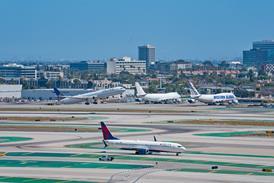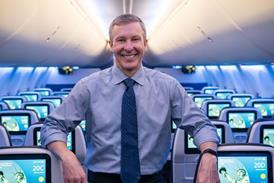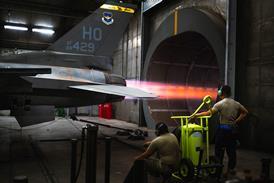North America saw strong growth in 2000, but restructuring and recession loom, writes Mark Pilling
North America's year-end returns are significant for at least one key reason. For the first time a once-famous name will not be among them. Canadian Airlines disappears after its acquisition by Air Canada, finalised a year ago. A first taste perhaps of consolidation still to come.
Meanwhile, Air Canada is still feeling the price of integrating Canadian into its fold. The new Canadian giant's restructuring will see a cut in the growth planned for its international services this year, the cessation of some routes altogether and reductions in domestic capacity too.
With the proposed United Airlines/US Airways and American Airlines/Trans World Airlines (TWA) mergers, and further possible consolidation to follow, the 2001 traffic figures could possibly see some more once-proud names fall by the wayside.
Low-fare and new entrant carriers will hope to avoid the same ignominy, albeit for different reasons, as they worry about the domination the possible new mega-carriers could bring to their marketplaces.
Carriers looking for some comfort amid painfully high fuel prices, more potential labour disruption and a dismal spell of weather can be bolstered by the fact that traffic is still solid.
"The year 2000 saw steady to strong growth all 12 months," says David Swierenga, chief economist at the Air Transport Association (ATA).
"Despite talk of an economic slowdown through the latter part of the year, the demand for air travel remained firm through December." Passenger enplanements rose by 3.1% compared to 1999, while revenue passenger miles increased by 5.2% last year, according to ATA data.
Encouragingly, the year-end average load factor rose to 72.8% from 71.3% in 1999.
All of the major carriers saw improvements in load factor while the picture was more mixed among national carriers. American Airlines, for example, was particularly pleased with strong revenue growth driven by both high load factors and robust yields, explains chairman Donald Carty. American's policy of taking out seat rows in economy class to offer passengers more space appears to have won consumer favour.
"Undoubtedly, this performance was aided by our 'More Room Throughout Coach' initiative which we launched last February, and which has been a huge success in terms of building customer loyalty," says Carty.
Among the national carriers, year-end results at Midwest Express showed how strong capacity growth unmatched by similar traffic growth is not a recipe for success. Chairman Timothy Hoeksema described 2000 as a "disappointing year" ending in a December "plagued by poor weather that contributed to the cancellation of 10% of our flights". In putting its sources to "more productive use by focusing on its Kansas City and Milwaukee bases of operation", Hoeksema is predicting improved traffic and better operational performance this year.
The crystal ball gazers are wondering what effect an economic slowdown will have on the airline sector. Investment bank Salomon Smith Barney (SSB) has compared what went wrong in 1990, the first year the industry slipped into the red, to its 2001 expectations. It isolates four major contributors to the "dramatic decline" in the sector's financial performance in 1990:anaemic US growth of 1.3%; industry capacity spiking up 7.9%; crude oil prices rising 24%; and the onset of the Persian Gulf crisis and heightened terrorism concerns.
"While we have concerns regarding all four issues, we believe it's unlikely that they will all come to a head in 2001 as they did in 1990," says SSB. It sees capacity growth of 4.7% in 2001, about two percentage points higher than it would like, but well below the 7.9% in 1990. "We think there is an excellent chance that the industry will remain profitable overall in the next recession," says SSB.
While the domestic market certainly has its share of challenges to overcome, it can draw comfort from the robust growth in international traffic. According to the US Department of Transportation, US and foreign airlines carried 137 million passengers between the USA and the rest of the world for the year ending June 2000, a 6.7% increase over 1999.
Source: Airline Business























